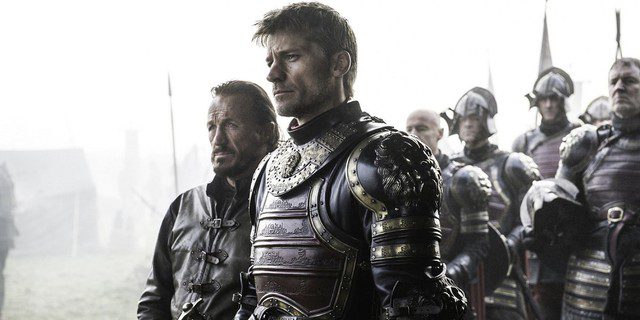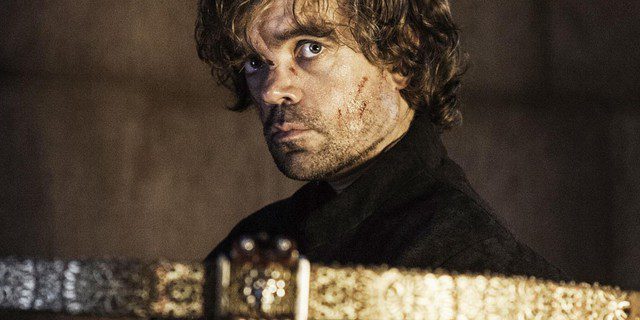8. Ten Lesser Houses That Serve House Lannister
With the well-known phrase, “A Lannister always pays his debts,” it’s quite daunting to consider the other houses that strive not to incur the wrath of this powerful family. Within their domain, the Lannisters have also been able to subjugate up to ten other major houses to strengthen their own power.
The major houses that serve House Lannister include House Clegane, Crakehall, Lefford, Lannister of Lannisport, Lorch, Marbrand, Payne, Serrett, Swyft, and Westerling. With their influence over these houses, the Lannisters have quickly expanded their power, dominating the Westerlands and holding numerous other significant territories.
7. The Lannisters Played a Major Role in the Downfall of the Targaryen Dynasty
Traditionally, the Lannisters are not known for their loyalty to anyone but themselves, primarily concerned with their own survival. Historically, their cunning and lack of trustworthiness have been highlighted many times, making the outcomes of various battles lean heavily in their favor. And the Lannisters only supported whatever side brought them the most significant advantage.
The most notable example is Robert’s Rebellion. When Aerys Targaryen fought against Robert’s forces, the Lannister army, based in Casterly Rock, maintained a strategic position behind the royal forces. However, the situation changed during the Battle of the Trident, where Robert killed Rhaegar, leading Tywin, the head of House Lannister, to quickly bring his army to the capital to eliminate the Targaryen king.
6. The Tale of Rains of Castamere
When discussing the disbelief in the Lannisters due to their self-serving actions, one cannot overlook the story encapsulated in the legend known as Rains of Castamere. This tale revolves around House Reyne, a house that dared to oppose the Lannisters. Like Casterly Rock, the castle of Castamere was built on a hill that overlooked the surrounding lands. When this hill was drained, House Reyne used the tunnels beneath it to fortify their defenses against the Lannisters.
Tywin Lannister, then a young man, led his forces against House Reyne in a single, devastating strike. Following this, Tywin ordered the complete destruction of the Reyne’s tunnels, flooding them and drowning the entire population of Castamere. Afterward, he even left the ruins of the castle to stand as a warning to other houses that dared to challenge the Lannisters.
5. Cersei and Jaime’s Relationship is Complicated
The incestuous relationship between the Lannister siblings, Jaime and Cersei, is not as simple as it appears. While we often see them conspiring together, it remains unclear how deeply their bond runs, and they have faced numerous obstacles along the way.
Initially, Cersei, unlike other noblewomen, was used by her father Tywin as a political pawn to connect with other houses. She was initially promised to Prince Rhaegar. However, after King Aerys rejected the marriage, Tywin still hoped to see his daughter linked to royalty. Eventually, as we know, Cersei was forced into marrying Robert. Even after Robert’s death, Cersei attempted to manipulate Loras Tyrell, a knight known for his homosexuality.
With Jaime, when he was younger, he was also pressured by his father to marry Lysa Tully, but later, Jaime accepted the role of a pawn in the royal game orchestrated by Cersei, allowing both to be together.
4. Cersei’s Fate Was Predestined
As a young girl, Cersei was promised to marry Prince Rhaegar. Cersei, at this time, was intrigued by a prophecy given to her by a fortune teller named Maggy the Frog from Lannisport. This seer had forewarned Cersei about her future, but she was dismissive about what her fate would entail. Ultimately, it suggested that she would suffer the loss of her three children and eventually meet her end at the hands of a “valonqar” (meaning younger brother in Valyrian). This prophecy led Cersei to harbor intense hatred towards Tyrion, seeking ways to eliminate him, though many fans speculate that the younger brother in the prophecy might refer to Jaime Lannister instead of Tyrion, thus making it a misleading prediction and not entirely accurate within the context of Game of Thrones.
3. Tommen and Myrcella Were Siblings
In the series, Tommen and Myrcella are portrayed as siblings and children of the incestuous relationship between Cersei and Jaime. The two are depicted as having an affectionate relationship. Surprising, right? If you are familiar with the details of the series, you would know that this is not explicitly shown.
In reality, the actors portraying them, Dean-Charles Chapman and Nell Tiger Free, were involved in a romantic relationship outside the script. Isn’t that sweet?
2. There Are Many Theories Suggesting Tyrion is Not a True Lannister
Author George R.R. Martin has been quite successful in developing the backstories of characters to create twists for viewers. Consider the recent reveal in the final episode of season 6 regarding Jon Snow’s parentage.
Besides Jon Snow, many fans theorize that Tyrion may not carry Lannister blood but might actually be a hidden Targaryen. This theory is one of the reasons Tywin finds it difficult to accept Tyrion, despite him being his biological son.
1. The Stark Family was Inspired by Real Historical Events
Although Game of Thrones is a fictional story with fantastical elements like zombies and dragons, certain historical events inspired some plotlines. The conflict between House Stark and House Lannister was drawn from the Wars of the Roses in England, which occurred from 1455 to 1487.
The rivalry between House Stark and House Lannister corresponds to the historical houses of York and Lancaster. Moreover, if you dig deeper into the characters, you will find many parallels between characters in Game of Thrones and historical figures, such as Robert Baratheon resembling King Edward IV, Cersei Lannister sharing traits with Elizabeth Woodville, and Joffrey Baratheon paralleling King Edward of Lancaster…























